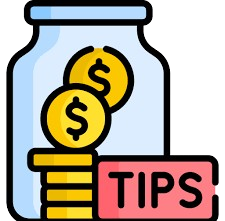
Are you sick and tired of being JUST above broke? Are you fighting an endless war with debt? It’s time to take control! You should have some financial literacy. If you know how to manage money, wealth can be built. It can secure your future. This guide will help you take charge of your finances. Ready to get started?
Building a Budget That You Can Actually Stick To
Budgeting is like going on a diet, many believe. It feels restrictive, right? It’s basically knowing how to track your money. Budgeting is telling your money what to do!
Transcribing Income and Expenditure
Identify how much money you earn first. Then follow where it all goes. You can even do a basic spreadsheet. Some apps can help, such as Mint or YNAB. The envelope system is an old-school way to track that. Getting expense categories right is important. This allows you to see where you might overspend.
Identifying Areas to Cut Back
Look at your spending. What is not essential? Subscriptions can stack quickly! Dining out is another cost that can stack up. Entertainment costs can be eye-opening, too. Mindful spending means pausing before you purchase. Do you really need that extra cup of coffee? Scaling back on a few things goes a long way.
Identifying Financial Goals & Allocating Money

What do you want to achieve? Do you want a new car? Maybe you want to travel. Some goals are short-term. Others are long-term. You should set aside budget for both. Allocate funds for each goal. This empowers you to reach them sooner.
Top approaches for tackling your DEBT.
Debt can feel overwhelming. Its like a heavy anchor weights you down. But don’t worry! There’s a way out of debt. It takes patience.
Types of Debt: What You Should Know
Not all debt is the same. Interest rates on credit card debts tend to be high. It often takes years to pay off student loans. Mortgages are for purchasing houses. What personal loans can be used for Personal loans are for many needs. Each has different consequences. High-interest debt is usually the most pressing to pay down.
Focus on High-Interest Debt

Two popular methods exist. The debt avalanche method prioritizes high interest debt first. So the money you save you end up spending in the long run. The debt snowball targets smallest balances. This gives you quick wins. Each has pros and cons. Think about what drives you the most!
How to Negotiate with Creditors and Consider Debt Relief Alternatives
Talk to your creditors. They could be open to reducing your interest rate. Debt consolidation combines multiple debts into one. Balance transfers consolidate debt onto a lower-interest card. Credit counseling can help. Caution against some predatory practices. Do business only with trustworthy groups.
Investing for the Long Term
Investing may sound scary. Not just for rich people. Anyone can invest. Little sums can compound as years go on. The earlier you start, the better your results will be.

Assessing Risk Tolerance and Investment Preferences
How risk comfortable are you? Stocks can offer strong returns. Bonds tend to be safer than stocks. Mutual funds generally consist of a diversified collection of investments. Like mutual funds, ETFs are a collection of financial assets. Real estate may be another option. Invest according to your risk profile.
The Power of Compound Interest
It will only get bigger over time — compound interest is like a snowball rolling downhill. It builds up faster and faster over time. Let’s say you invest $100. You receive an annual interest rate of 7%. That interest also earns interest! Over many years, it adds up.
Constructing a Diversified Portfolio
You know that old saying? Diversification is the act of spreading your investments. This lowers your risk. A diversified portfolio of stocks, bonds and other assets is sound. Your specific mix depends on your investment horizon.
Saving for Retirement
Retirement may seem far away. It really does help to start early. Even those little bits add up eventually. The earlier you get started, the better.
Learn the ABCs for Retirement Accounts (401(k), IRA)
A 401(k) is provided by your employer. IRA stands for an individual retirement account. With traditional accounts, you pay no taxes until withdrawal. Roth accounts provide tax-free retirement income. Employer matching is essentially free money! Take full advantage of it.
Calculating What You Will Need in Retirement
How much money will you need? It depends on your lifestyle. They should take into account the cost of health care. Inflation also plays a role. A financial adviser can help with this.
Maximizing Retirement Savings
Increase Your Contributions Regularly A little extra also goes a long way. Catch-up contributions are for workers age 50 and older. Perhaps consult a financial adviser. They can give tailored advice.
Building an Emergency Fund
Life happens, right? Unexpected expenses pop up. An emergency fund is a financial cushion. It prevents you from going into debt when the unexpected happens.
How Much Should You Save in an Emergency Fund?
How much should you save? To paint in broad strokes, plan for 3-6 months of living expenses. This includes rent, food and bills. When you have this buffer, you feel less stressed.
Where Should You Keep Your Emergency Fund
Keep it accessible. High-yield savings accounts are a good option. Another option is money market accounts. The key is easy access.
Restoring Your Emergency Fund After You Spend It
If you tap into your emergency fund, replenish it as soon as possible. Treat it like a priority. Plow it back in as soon as you can.
Conclusion
We went over some finance tips very quickly today! Building a budget also allows you to see where the cash is going. Debt settlement strategies free you from burdens. Investing from an early age compounds your net worth throughout your life. Retirement savings make sure family is secure in the future. An emergency fund shields you from surprises.
Take action now. Start small. Make consistent changes. Wealth is realistic, too. It requires forethought and discipline. Start your journey today! You can do this.



